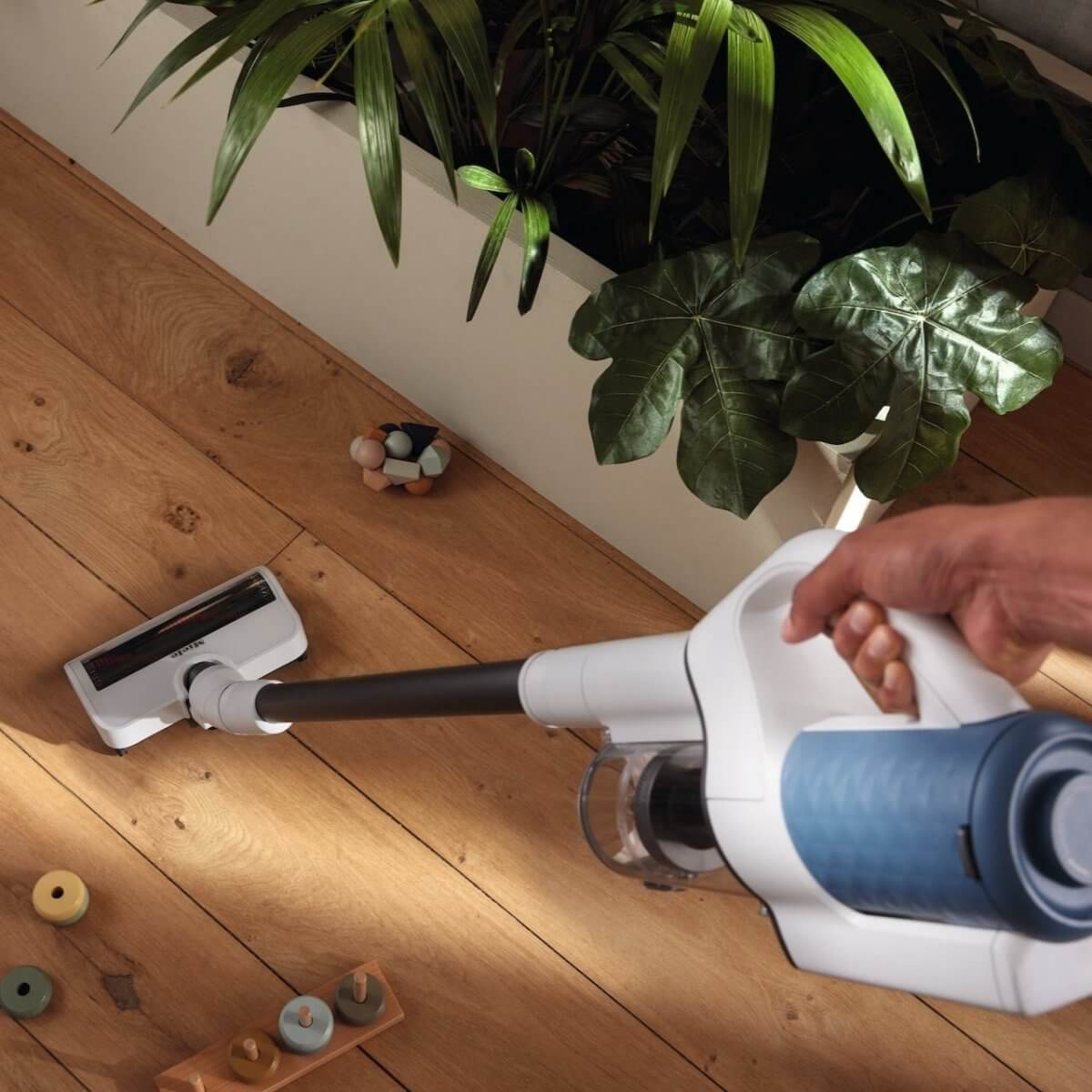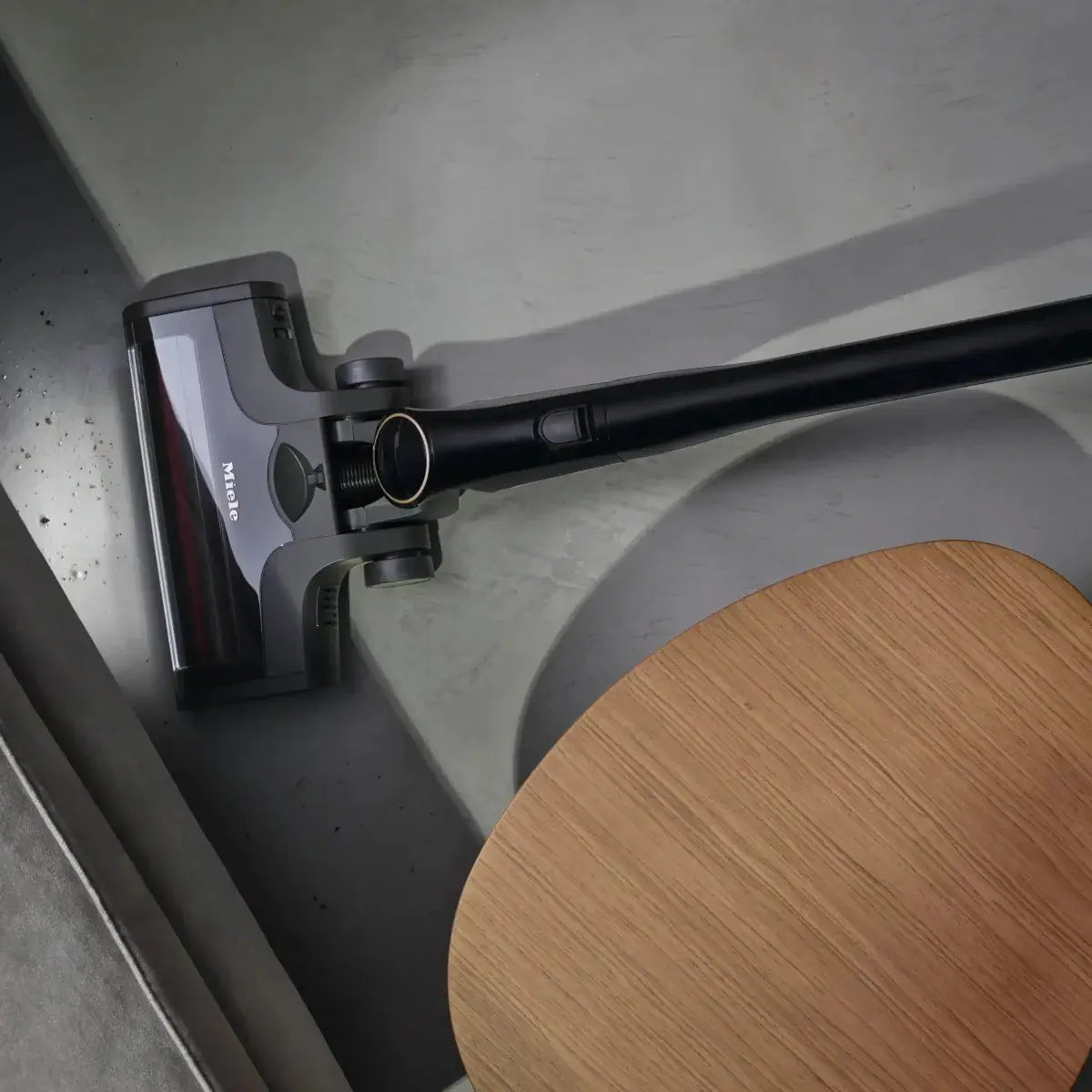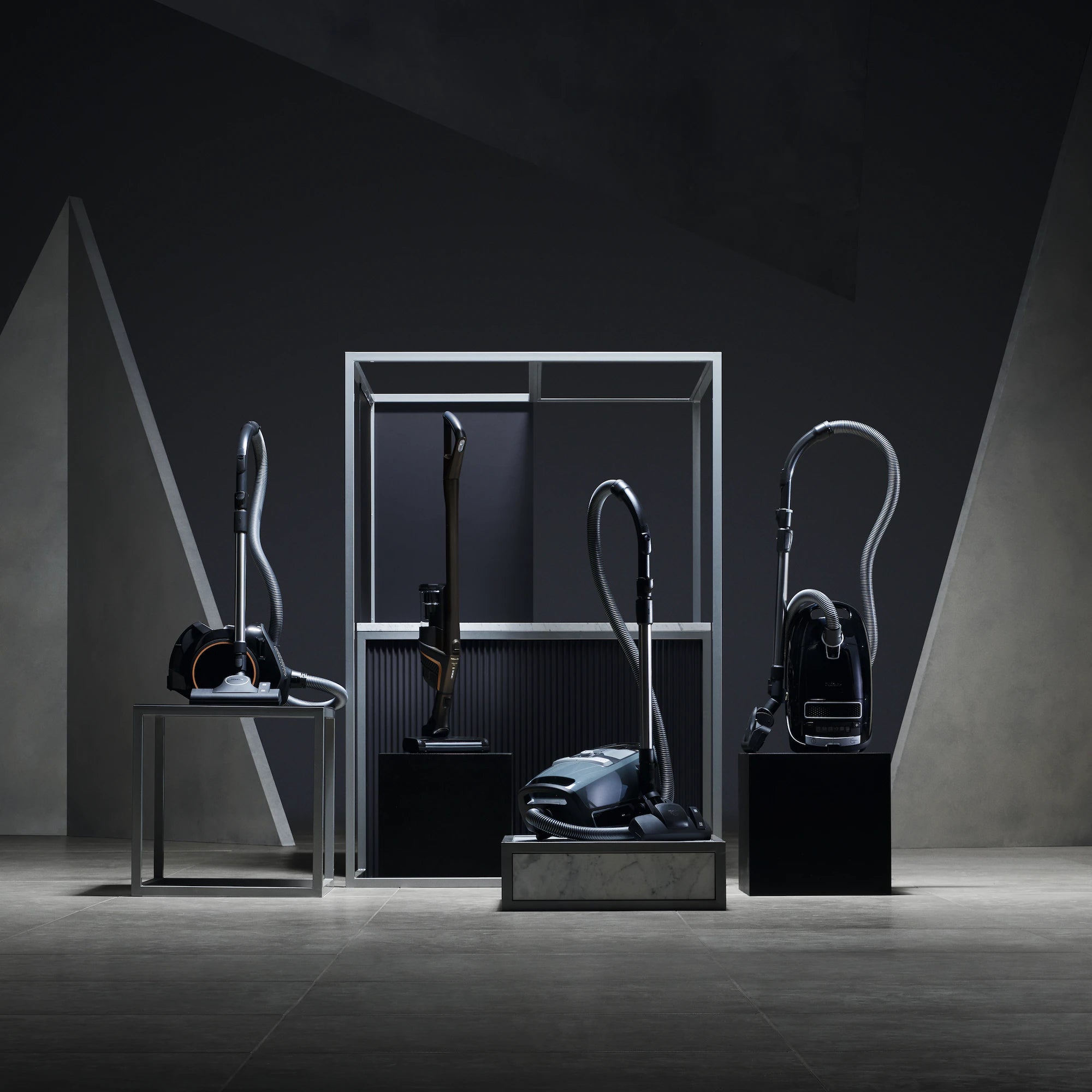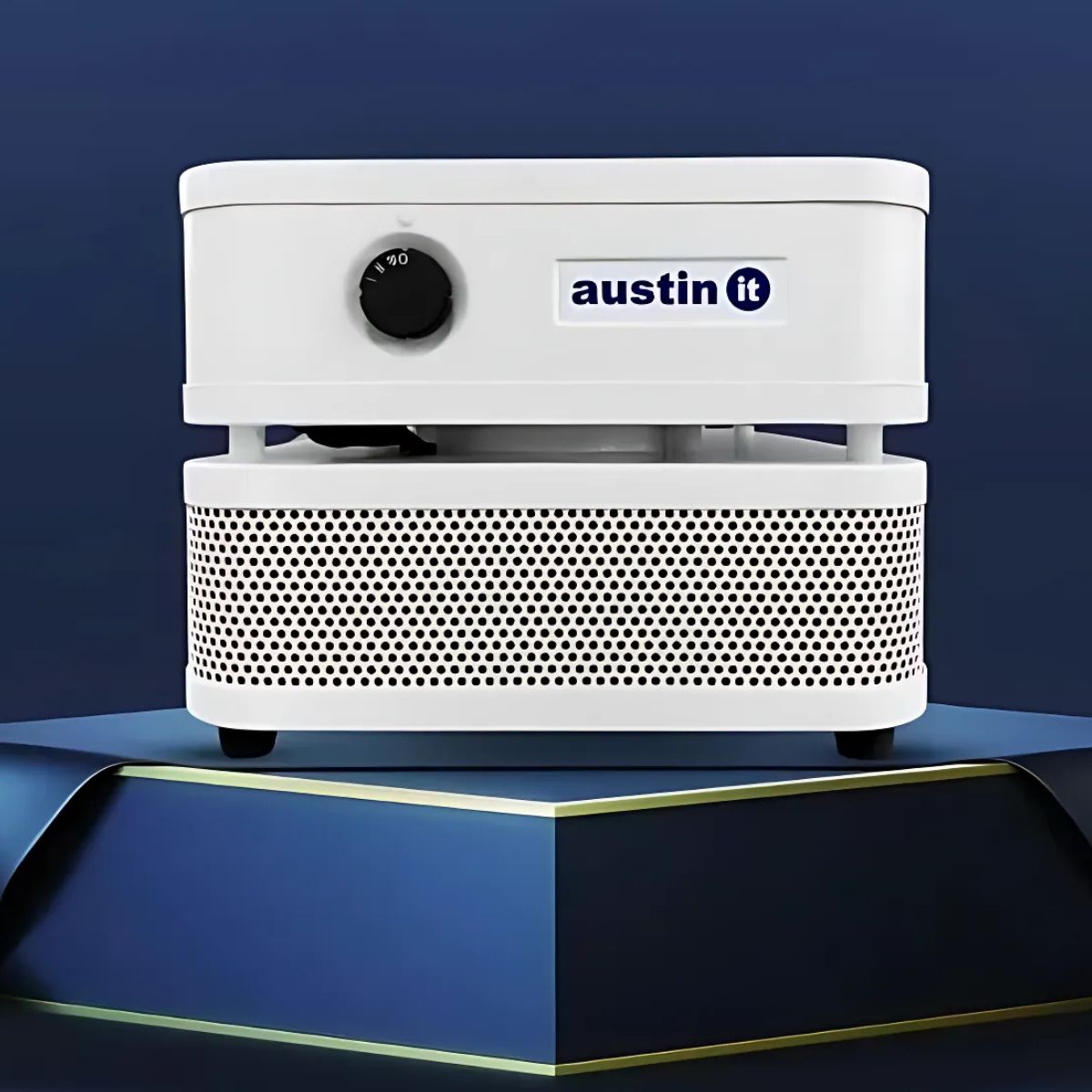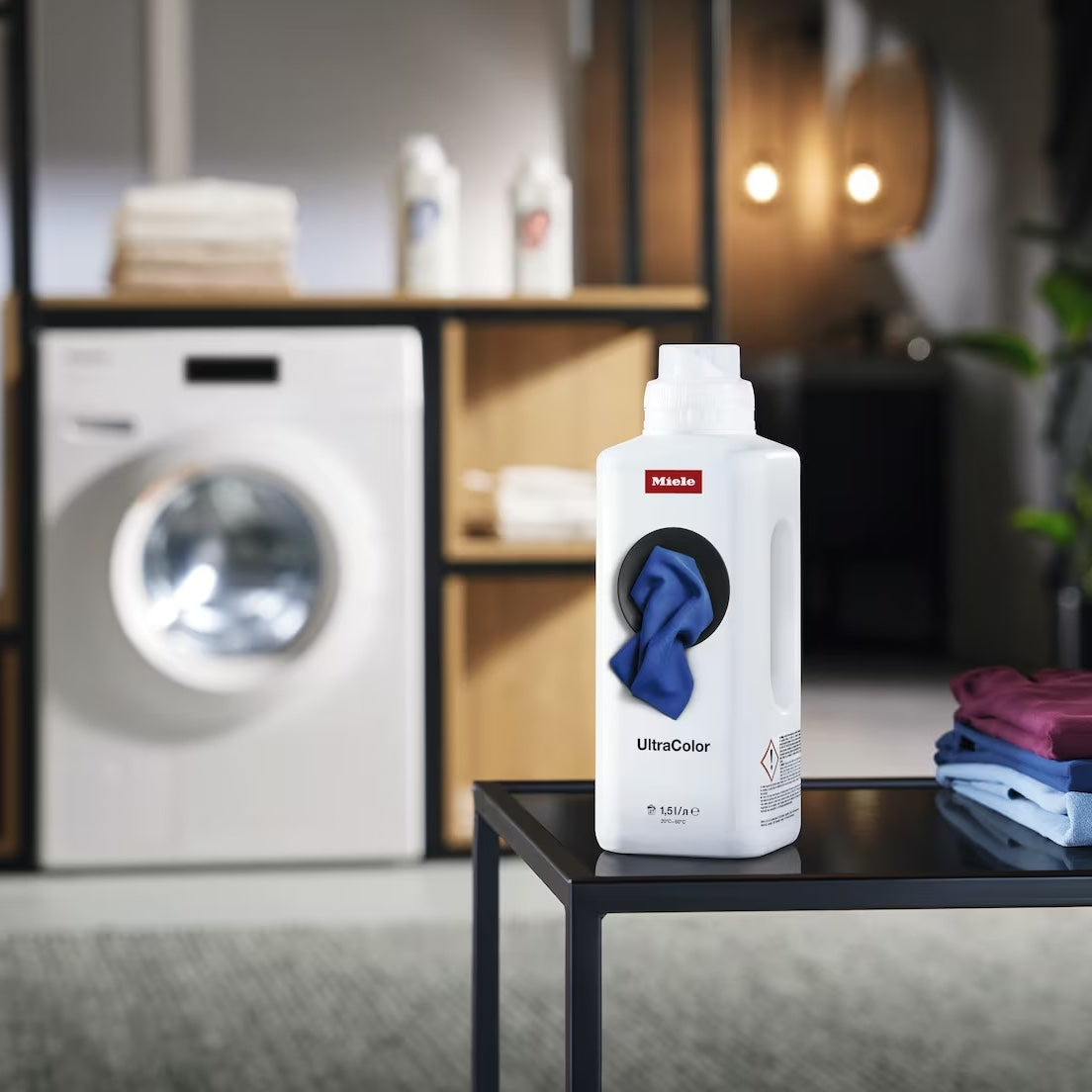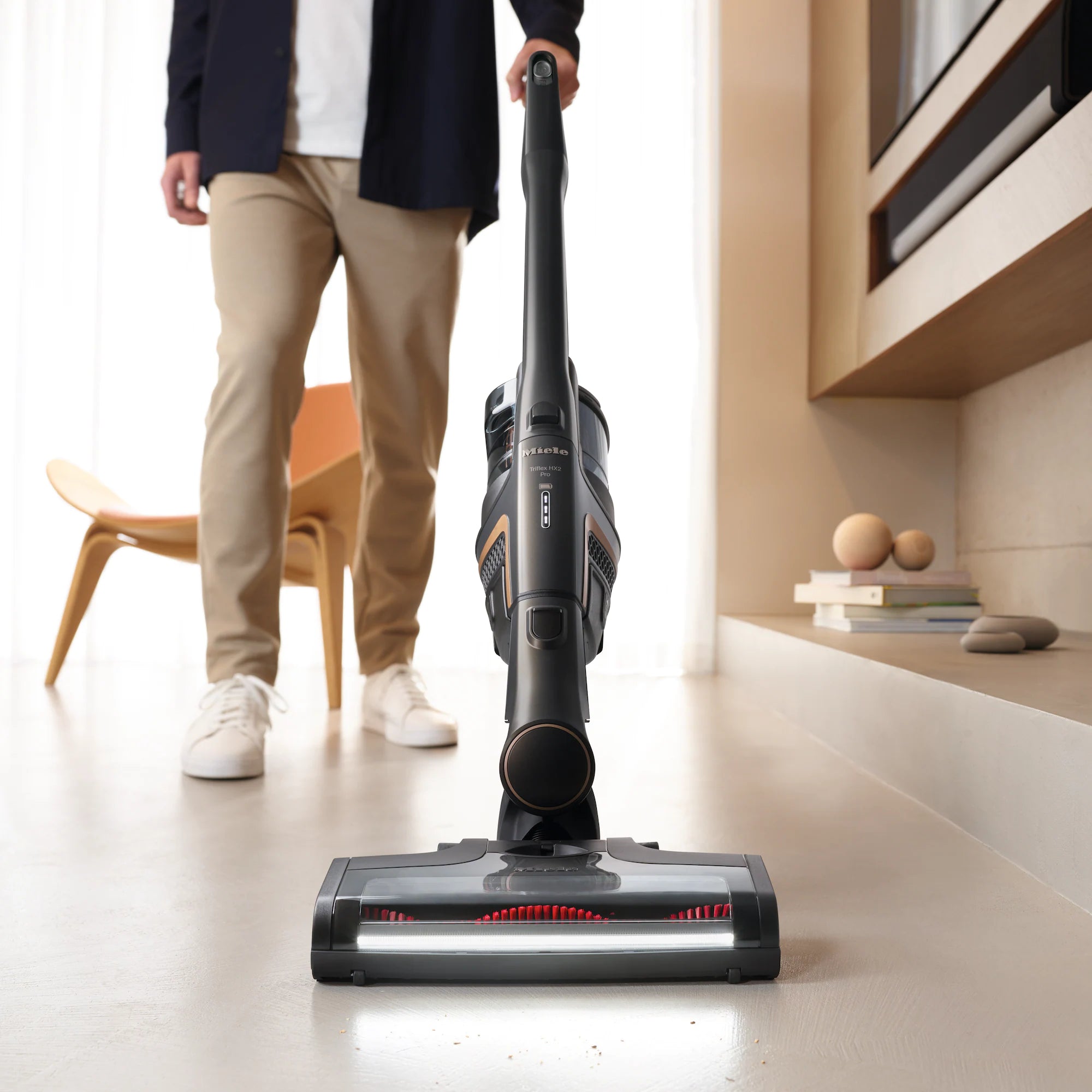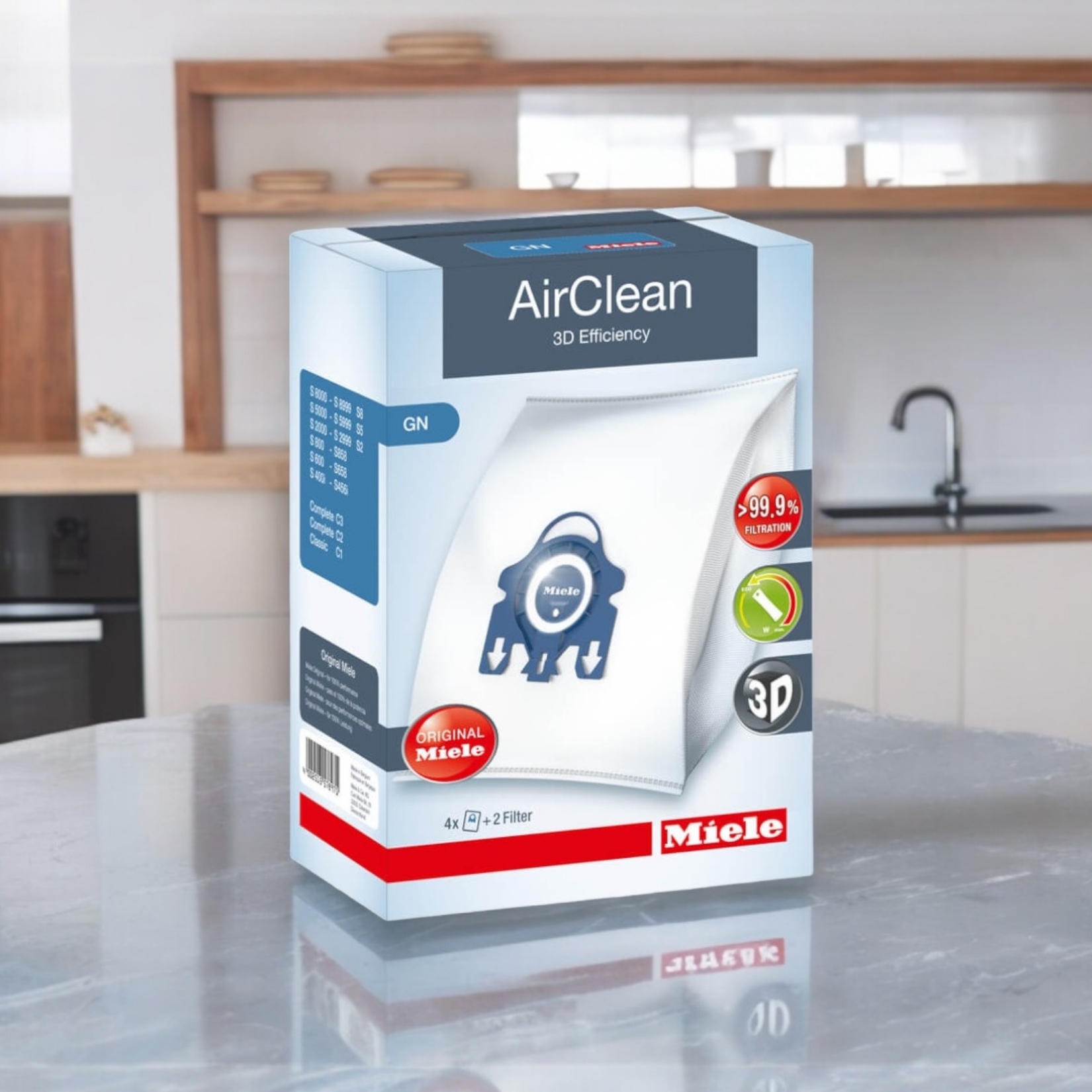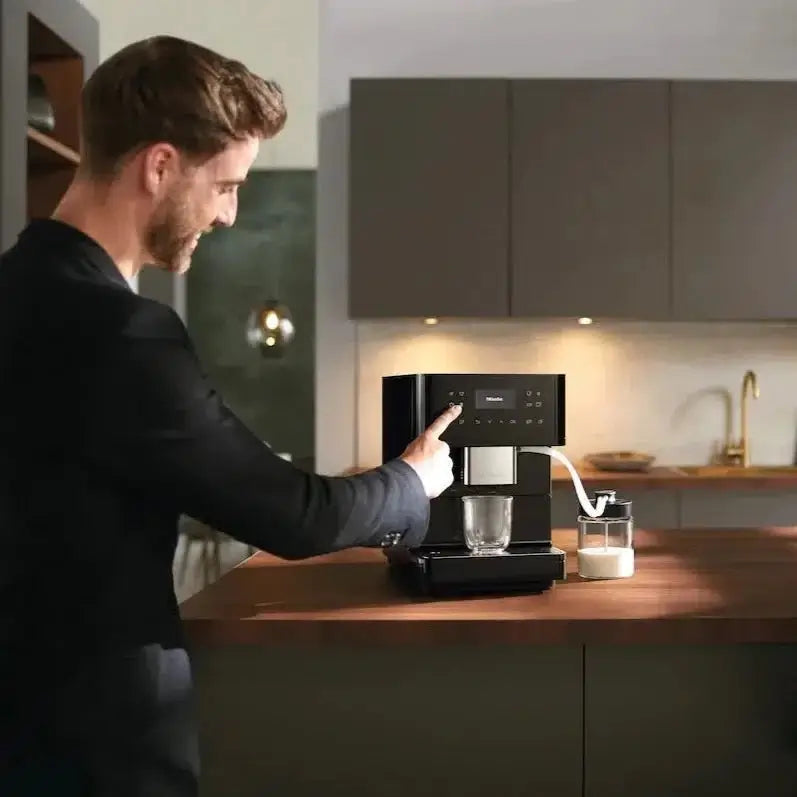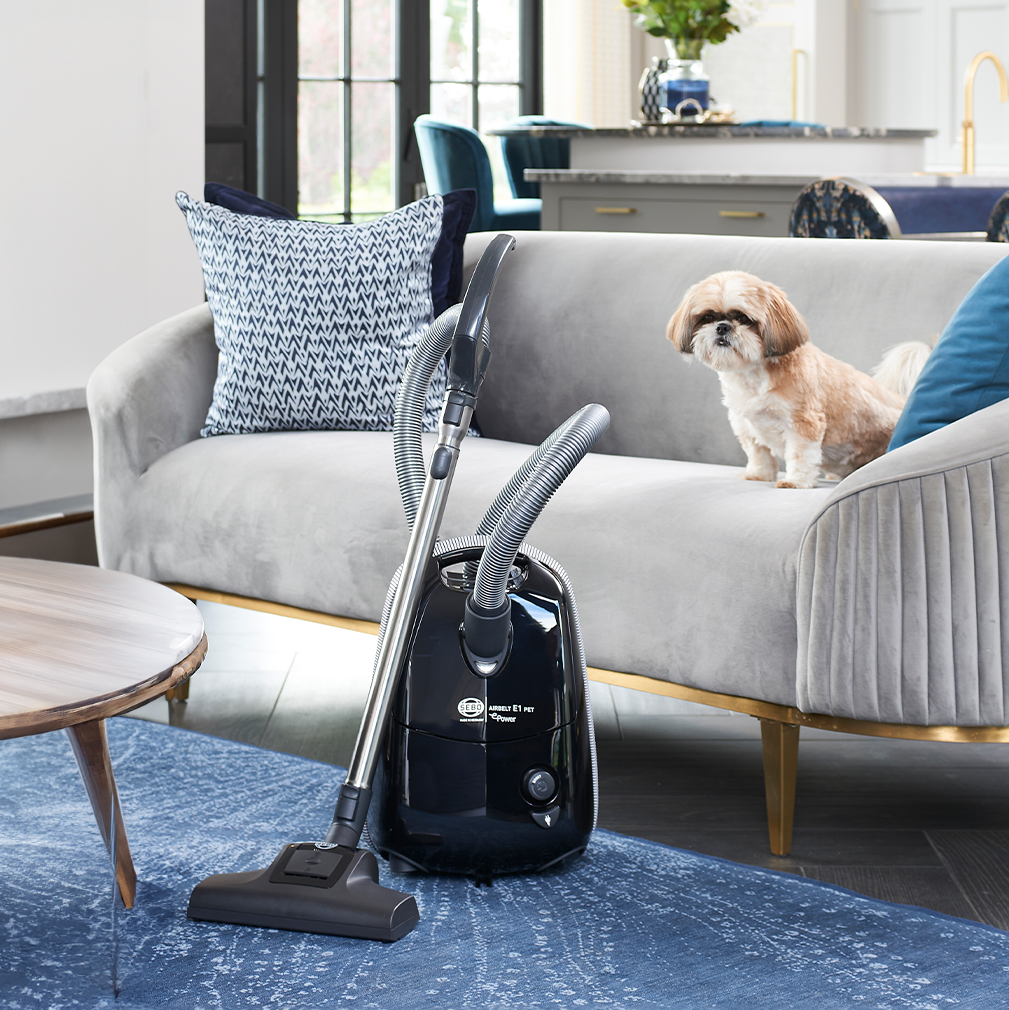 *There are so many different types of vacuum cleaners on the market that it can be confusing to decide how to choose a vacuum cleaner that best fits your needs. This article will help you understand how vacuum cleaners work, what your options are and how to narrow down your options to find the best types of vacuums for you and your home.
*There are so many different types of vacuum cleaners on the market that it can be confusing to decide how to choose a vacuum cleaner that best fits your needs. This article will help you understand how vacuum cleaners work, what your options are and how to narrow down your options to find the best types of vacuums for you and your home.
Types of Vacuum Cleaners
This article is focused on how to choose a primary vacuum cleaner for your home. So, setting aside specialty or secondary vacuum cleaners, such as hand vacuums, car vacuums, wet/dry vacuums, there are two major types of vacuum cleaners to choose from: uprights and canisters.
Uprights have traditionally been the favorite type of vacuum cleaner in the U.S. and Great Britain. In Europe and the rest of the world, canisters are the vacuum cleaner of choice.
Uprights generally have a revolving brush roll to provide agitation and may have one motor that provides the suction and also turns the agitator brush, or it may have two motors, one to provide suction and one to drive the brush.
Upright vacuum cleaners excel at cleaning synthetic (nylon, olefin or polyester) carpeting and many also have the ability to turn off the revolving brush for cleaning smooth floors. On-board attachments and integrated extension hoses have made uprights much more versatile and able to offer many of the features of canisters.
Still, canisters are by far the most versatile vacuum cleaner design. They offer outstanding performance on carpet and smooth floors as well as above-the-floor surfaces. Because the cleaning tools are used with a hose and wand, canister vacuum cleaners are more maneuverable than uprights, easily able to get under most furniture and into tight spaces.
There are three types of canister vacuum cleaners. All three are used with a hose, wands, floor tools and tool attachments. The difference is in the floor tools.
The first type of canister is called straight suction vacuum cleaner. It uses a floor tool with a simple, non-revolving brush for cleaning hard floors and flat carpets. The second type of canister uses a turbo or turbine floor tool. This has a revolving brush powered by the airflow created by the canister's suction motor.
The third type of canister uses a power brush floor tool most like an upright vacuum cleaner. A separate electric motor drives the power brush’s revolving brush roll. This type of canister is often referred to as a power team.
Bag or Bagless – Which Vacuum Is Better
 After upright or canister, the other major difference between vacuum cleaners is whether it’s bagless or uses a dustbag. For most people, it’s a matter of personal preference. But if family members have allergies or asthma, or if you’re concerned about the quality of your indoor air, a vacuum with a dustbag generally is the better choice.
After upright or canister, the other major difference between vacuum cleaners is whether it’s bagless or uses a dustbag. For most people, it’s a matter of personal preference. But if family members have allergies or asthma, or if you’re concerned about the quality of your indoor air, a vacuum with a dustbag generally is the better choice.
There’s nothing inherently wrong with bagless vacuums. The better ones do an excellent job of cleaning. But allergy and asthma sufferers need to consider all the dust they will be exposed to when maintaining the bagless vacuum.
No matter which bagless vacuum cleaner you use, it still comes down to removing a container of dust and allergens and crud that you so carefully removed from your home, and dumping it into something so you can throw it away. That can release a cloud of dust and allergens into the air you breathe as you throw it out, and as the cloud disperses and drifts into the rest of your home.
In addition, many bagless vacuums use filters that you need to brush or wash to remove trapped particles. This also can put back into your home the allergens and dirt you just removed.
It’s also important to remember that dirt travels through the whole vacuum cleaner system. The nature of bagless design makes it nearly impossible to seal a bagless vacuum so that there is no dirty air leakage through non-filtered openings. That’s in addition to the difficulties of creating an air tight seal on a collection bin while still making it easy to remove and replace.
Choosing the Best Vacuum Cleaner for Your Cleaning Needs
The next step is to evaluate the surfaces that you will be cleaning. Are there any special above the floor cleaning requirements that might require specialized attachments, such as high ceilings, elaborate light fixtures, ceiling fans, special collections, etc. If so, you need to be sure the vacuum cleaner has the reach, flexibility and tools to do those jobs.
But the main use of the vacuum will be to clean flooring. If your home has stairs, a canister is the recommended type of vacuum cleaner. An upright is not designed to clean stairs by itself. And, even with attachments, attempting to clean stairs with an upright is awkward. It can be done, but the results are generally poor, because you can’t use an upright's revolving brush on the stair treads, an area of high traffic.
If you don’t have stairs, and if your home is primarily synthetic fiber (nylon, olefin or polyester) wall-to-wall carpeting, an upright with smooth floor cleaning capability and the necessary attachments to clean above the floor surfaces is a good choice.
However, many homes today feature a combination of smooth floors in a variety of materials, area rugs and some wall-to-wall carpeting. In these homes (or in homes with stairs) a canister will provide the best results. Which type of canister depends upon the traffic patterns and the types of soil to clean, as well as the fiber of the carpets and rugs in the home?
Traffic and Carpet Soils
The amount of traffic and the type of carpet soils is an important factor in your choice of vacuum cleaner. Most carpet soils come in on the shoes of people and pets that enter the home. If you have a house full of kids and pets, you will have more carpet soils being brought into the home.
80% of carpet soils are dry soils with sharp edges that, left in the carpet and walked on, act as sandpaper to abrade and bend the fibers. This results in the appearance of “dirty” carpet along major traffic patterns. In fact, it’s not dirt but the way the bent and damaged fibers absorb light instead of reflecting it. This causes carpets to “ugly out” long before they actually wear out. So it’s important to choose the right vacuum cleaner based on the amount of traffic and types of soils encountered, and use it regularly to reduce the possibility of damaged fibers.
If you have synthetic fiber carpeting and/or rugs and high traffic and the resulting heavier soil load, choose a vacuum cleaner with aggressive bristles on the revolving brush. Vacuum cleaners with dense, stiff bristles as well as a beater bar function (there are many designs that accomplish this) are excellent to bring these dry soils up from the carpet pile where they can be brushed from the surface of the carpet and vacuumed away.
Another dry soil that won't abrade your fiber but is one of the most pervasive is dog and cat hair. Pet hair is best removed by using a revolving brush with stiff, densely packed brushes.
If your home has low traffic and no special soiling conditions, you can choose a less aggressive vacuum cleaner and maintain your home perfectly well. However, the general rule of thumb is to choose the most aggressive vacuum cleaner that your carpet and rug fibers can safely tolerate.
Carpet Fibers
As important as the traffic and type of soil is the type of fibers that your carpet or rugs are made with. Most carpeting today is made of synthetic fibers, primarily nylon, though olefin and polyester are also used. Synthetic fibers are very durable and you can use the most aggressive household vacuum cleaner without fear of fiber damage.
 Natural fibers, however, must be treated more gently. The most common natural fiber used in wall-to-wall carpeting is wool, but this represents less than 1% of the wall-to-wall carpeting in the U.S. Where wool is very popular, however, is in Oriental and other area rugs.
Natural fibers, however, must be treated more gently. The most common natural fiber used in wall-to-wall carpeting is wool, but this represents less than 1% of the wall-to-wall carpeting in the U.S. Where wool is very popular, however, is in Oriental and other area rugs.
Wool is a very durable fiber and has been used for thousands of years around the world to create rugs, but it must be vacuumed with care. A revolving brush can be used on wool, but the bristles must be flexible and forgiving, and not as densely backed on the brush roll, so as not to fuzz the yarns and prematurely wear the carpet.
While Oriental rugs are most often wool, they also can be made with silk. These rugs can vary in value from a few hundred dollars to tens of thousands of dollars and more. Many are sold for everyday use and can be cleaned with a good household vacuum cleaner with the type of flexible and forgiving bristles just mentioned.
However, if you have high value Oriental rugs, you’ll need to consider the age and condition of the rug, as well as the soiling conditions. High value rugs often see very little traffic and are protected from heavy soiling. You may want to consider cleaning such rugs using a carpet and rug tool, one that cleans only by suction and without a revolving brush.
Other fibers and materials used in area rugs include sisal, sea grass, mountain grass, bamboo, coir, cotton, jute, viscose, and even leather! Many of these rugs are woven and quite durable, but they still require softer bristles on the vacuum cleaner used to clean them. Specialty brushes are available for these materials, and we recommend consulting with a floor care expert for the best advice which one is best suited for your rug.
Always check the manufacturer's recommended care instructions before purchasing a new vacuum cleaner (or using your current machine on a new rug), but here are some rules of thumb to follow:
If you have synthetic fiber carpeting and/or rugs, you can select the most aggressive vacuum cleaner, whether upright or canister. If you have wool or other natural fiber carpeting or rugs, you'll need a power brush with flexible and forgiving bristles to properly vacuum without damaging the fibers. The option of softer, more flexible bristles is available primarily on power team canisters but there are some uprights available with less aggressive bristles.
Most homes have just one or two types of carpet, but if you have a variety of different types of carpeting and bare floors, be sure to choose a vacuum that has tools available for the most delicate rug you own. Here’s a quick reference of the styles of carpets and the type of vacuum best suited for them:
|
Carpet Type |
Recommended Vacuum Type |
|
Loop (knotted yarn) |
Upright or Canister w/ extra soft bristle brush |
|
Cut Pile (cut yarn) |
Upright or Canister w/ heavy-duty motorized brush |
|
Frisee (twisted yarn) |
Upright or Canister w/ adjustable height |
|
Woven (needlepoint) |
Canister w/ suction only rug tool |
|
Wool Loop |
Canister w/ suction only rug tool |
|
Wool Pile |
Upright or Canister w/ extra soft-bristle brush |
|
Silk |
Canister w/ suction-only rug tool |
|
Sisal |
Canister w/ specialty tool |
|
Shag (2 inches or more) |
Canister w/ shag rake tool |
Additional Considerations
Once you have identified the type of vacuum cleaner you want and matched it to the amount of traffic and the types of soiling in your home, you can begin look at other considerations to help narrow down your choices even further.
Vacuum Cleaner Performance
You will certainly want to evaluate the performance, or cleaning ability, of the vacuum cleaners you are considering. While this requires evaluating a range of vacuum cleaner specifications, the most important are water lift (or sealed) suction and airflow.
Many manufacturers tout the watts or amps of their vacuum cleaners. These rate the power of the vacuum motor, and years of marketing vacuums this way has let “power” become confused with “performance.” Watts and amps tell you how much electrical power the vacuum cleaner’s motor uses, not how much suction power the machine creates for picking up dirt and soil. For that, you need to know the vacuum’s suction. In fact, motor power ratings really don’t mean much at all. A 10-amp motor can create more suction power than a 12-amp motor, if it’s designed to be more efficient.
The key ratings are airflow (the most important of all) and sealed suction (listed on some vacuum cleaner specifications as “water lift”). On canister vacuum cleaners (with or without power heads) airflow of 100 CFM or more (or water lift of 90 inches or more) is recommended.
Upright vacuum cleaners come in a wide variety of configurations, but there are two basic designs that affect airflow and water lift. The first is the “Direct Air” or “Dirty Air” design where the dirt passes through the motor prior to any filtration on route to the dust bag. Dirty air uprights are only rated in amps.
The second basic design is one that features a by-pass motor where unfiltered air does not go through the motor. In uprights with this design, only filtered or completely clean room air passes through the motor in order to cool it. By-pass uprights will usually provide airflow but not water lift specifications and a high performing upright will offer 60 CFM or better.
Many uprights will not offer airflow ratings at all and will only rate the motor in amps.
Filtration
An important, but often overlooked, element of cleaning ability is the capability of the vacuum cleaner to retain the soils, and especially the fine particulates, that it picks up. If a vacuum cleaner does not offer high levels of filtration, these fine particles can simply go right through the vacuum cleaner and back to the room air, where they settle as dust.
Most quality vacuum cleaners will do an adequate job of filtering the air the leaves the machine. But if anyone in your home suffers from allergies, asthma or any other health condition that is impacted by fine particles or allergens in the indoor air, a high filtration or HEPA filtration vacuum cleaner is strongly recommended.
HEPA stands for High Efficiency Particulate Air. A HEPA filter must remove 99.97% of all particles as small as 0.3 microns in size from the air that passes through it. This is the standard “best” filtration method for residential applications.
The phrase “as small as” is important because it designates that if all the particles were 0.3 microns in size, the filter would still have 99.97% efficiency. The term “down to 0.3 microns in size” does not refer to the same filtration performance as it may refer to a mixture of particle sizes for the stated efficiency.
You may see terms such as “Certified HEPA,” “True HEPA” or “Absolute HEPA.” These all are HEPA filters that meet the same HEPA standard. Where you need to be careful is when you see terms such as “HEPA-like” or “HEPA quality” or any other qualification that is used where you expect to see “HEPA”.
HEPA is used primarily in the United States. In Europe, companies generally refer to the same filter as an S-Class filter and some manufacturers, like SEBO, use the terminology here. Like HEPA filters, S-Class filters must remove 99.97% of all particles as small as 0.3 microns in size from the air that passes through them.
Quality and Durability
The quality of your vacuum cleaner is also important and will determine whether your vacuum cleaner will be replaced in a year or two or will last for many years and even decades.
When evaluating durability, look at the quality of the construction. Look for solid components of good quality as opposed to flimsy or brittle appearing materials. Look for good fit and finish without rough edges. The seals should be heavy duty and components that open and close should do so with a nice solid feel.
Generally, mass-market, low-priced products are not designed for long-term use. Once you compare a mass-market vacuum cleaner to those made by companies specializing in high-quality, long lasting machines, the differences will be obvious.
Another indication of quality and durability can also be partially determined by the length and specifics of the warranty. Look for longer warranties, especially on the motor.
Ease of Use
No matter how great a vacuum cleaner might be in terms of specifications, it must be easy for you to use. Think about what you don't like about your current vacuum cleaner and look for a new one that eliminates those problems.
Consider whether you have any specific issues concerning weight or personal preferences concerning uprights versus canister vacuum cleaners. If there are specific reasons for buying a new vacuum cleaner, remember to be sure that your new one provides solutions to these cleaning challenges.
Regardless of your specific situation, the vacuum cleaner you choose should feel good in your hand and not be fatiguing to use. It should maneuver easily without straining to get under furniture or around corners.
Noise Level
Noise is also a significant consideration. Some vacuum cleaners can be so noisy that they're almost unbearable to use. Many good vacuum cleaners can operate at levels that are quite comfortable and will allow you to hear the phone or doorbell ring quite easily.
The amount of noise a vacuum makes while operating is rated in decibels (dB). To give you some idea, a conversation at home is rated at 50dB, a garbage disposal at 80 dB and a motorcycle or lawnmower at 100 dB. Extremely quiet vacuum cleaners can operate at decibel levels in the mid-60s while cleaners in the 70-77 dB range are still relatively quiet compared to the vacuum cleaner you grew up with.
Capacity
The capacity of a vacuum cleaner relates to the size of the dust bag or cup. The bigger it is, the less often it needs to be changed.
If you have a large home and/or lots of traffic (think kids and pets) this means that you’ll have greater amounts of soil to remove. In this case, consider a full-sized vacuum cleaner. This way, you won't have the inconvenience of constantly changing the bag or emptying the cup.
Storage
Some homes have plenty of storage space and some don't have an inch to spare. If storage space is at a premium in your home, be sure to give some thought to where you will store your new vacuum cleaner. Will it fit in the space where you stored your last one?
Attachments
All quality vacuum cleaners come with a set of come with a set of accessory tools that cover most floor and above-floor vacuuming needs. But there are some jobs that need special tools and some tools that just make the job easier and the availability of add-on accessory tools will extend the utility and, often, improve the performance of your vacuum cleaner.
Take the flexible crevice tool, for example. The standard crevice tool works great for most needs, but it can’t reach around corners or behind appliances. The flexible crevice tool can. It’s longer than a standard crevice tool and has nozzle that gently bends to reach behind furniture and appliances and get into hard to reach corners.
Another popular tool is the soft-bristle dusting brush. It’s larger than a standard dusting brush has softer bristles for gently cleaning knick-knacks, lampshades and other fragile items. There’s also a version that lets you adjust the angle of the brush, making it easier to items such as dust high shelves, window blinds and ceiling fans.
By far the favorite accessory tool among Best Vacuum customers is the mini-turbobrush. This is a small, handheld turbobrush makes easy work of cleaning pet hair off furniture, so it’s very popular in homes with cats and dogs, But it’s an ideal tool for getting extra cleaning power for upholstered furniture and stairs and is the ideal size for cleaning car seats and floorboards.
How Much Does a Quality Vacuum Cleaner Cost?
How much should you spend on a better quality vacuum? The short answer is, somewhere between $399 and $899. Within that range you can buy something that is made well and will last 10-20 years.
If that seems like a lot of money, consider this: a vacuum is something you use at least once a week and sometimes every day. Because better quality vacuums last up to 10 times longer than cheaper vacuums, in the end, you’ll pay about $5 a month to own a quality machine that works better and is a pleasure to use.
Here’s a breakdown of what you can expect to get at various price points:
Under $399
There are several high-quality vacuums in the $300 range, but these are almost exclusively for bare floors and area rugs or very flat carpeting. If you have wall-to-wall carpet in your home, you’ll have to up your budget a bit for a quality vacuum cleaner because of the more complicated and expensive revolving brush systems need to properly vacuum thicker carpets and rugs.
$399-$599
This is the sweet spot for buying a quality vacuum at a reasonable price. At this level, you may not get all the extra features you want, but you will get higher-quality materials, durable motors and excellent performance.
$649 - $999+
Even though basic performance and quality stay the same as the mid-range models, vacuum cleaners in this top range offer better fit and finish, quieter noise levels, increased filtration and features such as automatic suction control, lighted floor tools and soft, cushioned bumper guards. While it is never absolutely necessary to purchase something in this range, extra features like these make vacuuming a bit less of a chore and are well worth it if the budget allows.


